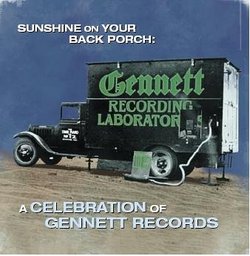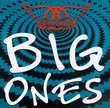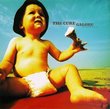| All Artists: Sunshine on Your Back Porch: Celebration of Gennet Title: Sunshine on Your Back Porch: Celebration of Gennet Members Wishing: 0 Total Copies: 0 Label: Larchmont Recordings Release Date: 8/30/2005 Genres: Country, Blues, Jazz Styles: Bluegrass, Acoustic Blues Number of Discs: 1 SwapaCD Credits: 1 UPC: 744773002624 |
Search - Sunshine on Your Back Porch: Celebration of Gennet :: Sunshine on Your Back Porch: Celebration of Gennet
 | Sunshine on Your Back Porch: Celebration of Gennet Sunshine on Your Back Porch: Celebration of Gennet Genres: Country, Blues, Jazz
|
Larger Image |
CD DetailsSimilarly Requested CDs
|
CD ReviewsAlbum Information: J. S. Smith | Chili, NY | 03/02/2005 (5 out of 5 stars) "1. CANAL STREET BLUES - Randy Brecker
Randy Brecker: Trumpet Joe Ferry: Guitar, Banjo & Bass Jessica Corchia: Percussion Cam Millar: Trombone Jim McElwaine: Clarinet Tom Rose: Trumpet Engineered by Dennis Kalligas & Chace Levi Recorded & Mixed @ Larchmont Sound Studios, Larchmont NY Produced by Joe Ferry 2. ROWAN COUNTY FEUD - Rhonda Vincent Rhonda Vincent: Vocals Joe Ferry: Guitar, Banjo & Bass David Keen: Violin Engineered by Dennis Kalligas & Chace Levi Recorded & Mixed @ Larchmont Sound Studios, Larchmont NY Produced by Joe Ferry Rhonda Vincent appears courtesy of Rounder Records 3. RYE STRAW - Cindy Cashdollar Cindy Cashdollar: Dobro Joe Ferry: Guitar & Bass David Keen: Fiddle Engineered by Eric Helmuth @ EricH Sound Produced by Joe Ferry 4. LOST LOVER BLUES - Stacey Earle & Mark Stuart Stacey Earle: Vocal Mark Stuart: Vocal, Guitar Engineered by Eric Helmuth @ EricH Sound, Port Chester NY Produced by Joe Ferry 5. BULLFROG BLUES - The Hellhounds John Gillespie - guitar and vocals Mike Herman - guitar Produced by: Charlie B. Dahan Engineered by Dr. Orlando Legname Ass't Engineer: Chris Mele Recorded and Mixed at SUNY College at Oneonta's Studios 6. SOMEDAY BABY BLUES - Duke Robillard Duke Robillard - guitar, mandolin and vocals Doug James - harmonica Engineered by Thom Hiller Recorded at Duke's Mood Room, Pawtucket, RI. Produced by Duke Robillard Duke Robillard appears courtesy of Stony Plain Records 7. STARDUST - Jenny O Jenny O: Vocals, Piano Andrew Platt: Bass Produced & Engineered by Ronen Ben Codor Recorded & Mixed @ Larchmont Sound Studios, Larchmont NY 8. OLD FLANNIGAN - Cindy Cashdollar Cindy Cashdollar: Dobro Joe Ferry: Guitar & Bass David Keen: Fiddle Engineered by Eric Helmuth @ EricH Sound, Port Chester NY Produced by Joe Ferry 9. WORKING MAN BLUES - The Archer Street Rams Joe Ferry: Guitar, Banjo & Bass Jessica Corchia: Percussion Cam Millar: Trombone Jim McElwaine: Clarinet Tom Rose: Trumpet Engineered by Dennis Kalligas & Chace Levi Recorded & Mixed @ Larchmont Sound Studios, Larchmont NY Produced by Joe Ferry 10. BACKDOOR BLUES - The Hellhounds John Gillespie - guitar and vocals Mike Herman - guitar Produced by: Charlie B. Dahan Engineered by Dr. Orlando Legname Ass't Engineer: Chris Mele Recorded and Mixed at SUNY College at Oneonta's Studios 11. YO YO BLUES - Osei Essed Osei Essed: Vocals, Banjo Cicero Jones: French Horn Produced by Brian Starky Recorded & Mixed @ Larchmont Sound Studios, Larchmont NY 12. MAYBE IT'S THE BLUES - Deanna Bogart Deanna Bogart - vocals and piano Produced and Engineered by Deanna Bogart 13. MISSISSIPPI BO WEEVIL BLUES - Langhorne Slim Langhorne Slim: Vocal, Guitar Engineered, Mixed & Co-Produced by Sid "Lemon Seed" Sweets & Doug "Big Red" Donaheezy Recorded & Mixed @ Larchmont Sound Studios, Larchmont NY 14. AMAZING GRACE - Melissa Ferrick Melissa Ferrick: Vocals, Guitar & Piano Produced & Engineered by Dennis Kalligas & Chace Levi Recorded & Mixed @ Larchmont Sound Studios, Larchmont NY Gennett Credits Produced by Joe Ferry & Charlie B. Dahan Liner Notes by: Charlie B. Dahan Booklet Design by: Elizabeth Holloway Mastered by Dennis Kalligas & Chace Levi @ Larchmont Sound Studios Cover photo by Duncan Scheidt Assistant to the Producers: Kimberly Puletz Portions of the proceeds from every record sold goes to support the great work being done by the Starr-Gennett Foundation (www.starrgennett.org). The Starr-Gennett Foundation is a not-for-profit organization dedicated to preserving and promoting the legacy of Gennett Records and its parent organization, the Starr Piano Company. Since 1991 the Foundation has been working to save this important legacy and foster worldwide appreciation for this remarkable piece of American popular music history. To donate or share ideas, contact them at: Starr-Gennett Foundation, Inc. 33 South 7th Street Richmond, IN 47374 E-mail: info@starrgennett.org Gennett Records Joe and I decided to launch our label by first paying homage to the great labels that came before us. We started the series with Paramount, as we both have been longtime fans of the many great blues musicians that recorded for this pre-WW2 label. However, it is the Gennett Record Company that holds a dear place in our hearts. Some of the music recorded by Gennett proves just as profound (Bix Biederbecke, Louis Armstrong, Gene Autry, Hoagy Carmichael, Jellyroll Morton, just to name a few), but to us, it is the company and what it means to the development of the record industry that most catches our attention. We, again, asked our friends to consider various repertoire from the label, affiliates or studios and record their interpretation and we feel we have documented another fine musical moment celebrating this truly innovative company. The following is an excerpt of a speech I gave at the Starr-Gennett Foundation's annual gathering, The Untouchable Times, in October of 2004. Throughout the brief history of the recording industry, the independent record label has been at the forefront of change in music. The first explosion of "indies" occurred in the late 1940's and early 1950's with labels such as Blue Note, King, Sun, Duke, Atlantic, Chess, Dial and Modern. They were among the champions of vibrant new genres including urban blues, bebop jazz, R&B, country, soul, gospel, doo-wop and rock and roll. However, the template for this revolution was set in 1915 when the Starr Piano Company decided to augment its business by making sound recordings. Independent labels differ from major labels in that they concentrate on recording music and artists outside of the "mainstream." The majors prefer established artists and music markets, and account for the vast majority of records sold. In today's music industry the four major recording companies are Universal, Sony-BMG, Warner Music Group and EMI. In the Starr era, Victor, Columbia and Edison dominated. Most independent labels begin when their founders pinpoint a vacuum in the market and seek to fill it. They know that trying to compete directly with the majors is futile, and that to succeed they must operate outside the parameters of "popular" music. The Starr Piano Company did not enter the recording industry with that awareness. It intended to compete with Victor, Columbia and Edison head on, but the big three proved an immovable force. Any of the three could easily lure away from Starr an artist who could crowd theaters or music store record shelves. The market dominance of the early majors was further assured by their cooperation in protecting Victor's industry standard patent on lateral cut discs. Other recording companies were obliged to use the lower quality vertical cut process and were thus competitively hobbled. Starr Piano, which soon renamed its record label "Gennett" for Starr President Henry Gennett, overcame its technical handicap by successfully challenging Victor's patent. Further, Gennett Records was one of the first labels to realize it could work around the majors' lock on high-profile talent by recording music that was not considered mainstream. Okeh had proved it with the release of the first blues record in 1920 (Mamie Smith's "Crazy Blues") and the first hillbilly record in 1923 (Fiddlin' John Carson's "Little Log Cabin in the Lane"). They sold well, showing that America was ready for new music and that recording it could be profitable even with modest sales. Gennett's openness and willingness to record all styles of music led it not only to make some of the earliest recordings of real jazz, blues, country and ethnic music, but also to make history as the first record company to manifest all the characteristics of the independent label. Indies seek out different and unique artists and give them freedom to record their music their way with the musicians and repertoire of their choosing. We hear on Gennett recordings what the artists sounded like (within the limits of early studio technology), uninfluenced by a producer or A&R (Artist and Repertoire) person. Why did Gennett offer "creative control" to many of its recording artists? It has been speculated that the company did not hire many music men, those individuals with backgrounds in music as well as recording. It is supposed that in many cases Gennett simply used various piano factory employees as session supervisors. Having little or no music experience themselves, they simply let the artist record and did not offer input or advice, whereas the majors and other labels employed people qualified for such consultation. For example, Columbia's great A&R man during the 1930's and beyond, John Hammond would not only oversee the production of the artists with whom he worked, but often chose the material for them to record. Moreover, he was notorious for augmenting a bandleader's ensemble with musicians he felt were better equipped to handle the repertoire. If the studio personnel at Gennett were music neophytes, it is small wonder that much of the material recorded was later rejected as not worthy of shellac. Perhaps the creative freedom Gennett's artists enjoyed can be explained by the sheer volume of recording undertaken and the great variety of genre and styles represented. Surviving ledger books and record cards show that the studios were always booked so heavily and with so many different kinds of artists that it would have been impractical for Gennett to direct all of them in the choice of material, arrangements, and back-up personnel. Instead, the artists were permitted to record each song up to three times, and then the staff would convene to choose the cut they considered the most marketable. While that practice assured some quality control after the recordings were made, the artists had already determined what was captured on those selected for release. Gennett is credited with many historic achievements involving the music and artists they recorded. However, Gennett's most profound contribution to the infant recording industry, and perhaps its most durable legacy, was a template for the independent label. For it is the indie that embraces new and different artists without squeezing them into commercial conformity. In that way indies alter more than just the styles of music to which the public listens. They also disseminate artistic influences that change culture and society." |

 Track Listings (14) - Disc #1
Track Listings (14) - Disc #1








